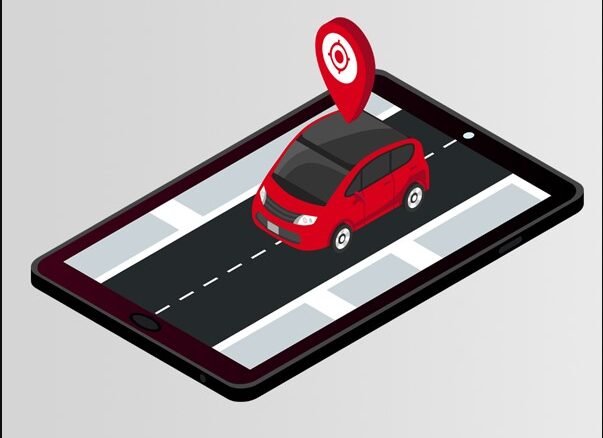how to set up a car-tracker vehicle
Setting up a car tracker involves installing a GPS tracking device in your vehicle to monitor its location and movement. Here’s a step-by-step guide to help you set it up:
Step 1: Choose the Right GPS Tracker
- Types of Trackers: Decide between an OBD-II tracker, a hardwired tracker, or a portable tracker.
- OBD-II Tracker: Plugs into the vehicle’s OBD-II port, usually located under the dashboard.
- Hardwired Tracker: Connected directly to the vehicle’s electrical system, providing a more permanent solution.
- Portable Tracker: Battery-powered and can be placed anywhere in the vehicle.
Step 2: Purchase the Tracker and a Subscription Plan
- Most GPS trackers require a subscription to a tracking service for real-time location data.
Step 3: Gather Tools and Materials
- Depending on the type of tracker, you might need basic tools like screwdrivers, pliers, and zip ties.
- If hardwiring, ensure you have wire strippers, electrical tape, and connectors.
Step 4: Install the Tracker
For OBD-II Tracker:
- Locate the OBD-II port (usually under the dashboard near the steering wheel).
- Plug the tracker into the OBD-II port.
- Ensure it’s securely connected.
For Hardwired Tracker:
- Locate a Power Source: Typically, the tracker needs a constant power source (usually the vehicle’s battery) and a ground connection.
- Connect the Wires:
- Red wire to a constant power source (positive terminal).
- Black wire to a ground point (negative terminal).
- Additional wires may be connected to the ignition or other points, as specified in the manual.
- Secure the Tracker: Use zip ties or double-sided tape to secure the tracker in a hidden location inside the vehicle.
- Test the Connections: Ensure all connections are secure and the tracker powers on.
For Portable Tracker:
- Charge the tracker fully.
- Place it in a secure and hidden location within the vehicle (e.g., under a seat, in the trunk).
Step 5: Activate the Tracker
- Follow the manufacturer’s instructions to activate the tracker, which usually involves setting up an account on a website or app.
- Enter the tracker’s unique ID and follow the setup instructions to link it to your account.
Step 6: Test the Tracker
- Take your vehicle for a short drive to ensure the tracker is working correctly.
- Check the real-time location on the app or website to verify that it updates as expected.
Step 7: Secure the Tracker
- Ensure the tracker is well-hidden and secured to prevent tampering.
Step 8: Monitor the Tracker
- Regularly check the tracker’s battery level if it’s a portable device.
- Monitor the tracking service to ensure the device is always functioning properly.
Tips:
- Choose a Reliable Tracker: Research different models and read reviews to select a reliable and accurate GPS tracker.
- Maintain the Device: Regularly check for software updates and keep the device clean and dry.
- Privacy and Security: Be aware of privacy implications and ensure that only authorized individuals have access to the tracking data.
If you have specific requirements or need help with a particular model, feel free to ask!
Certainly! Let’s delve deeper into each step, ensuring a comprehensive understanding of the process.
Step 1: Choose the Right GPS Tracker
- Types of Trackers:
- OBD-II Trackers:
- Pros: Easy to install, provides data directly from the vehicle’s onboard diagnostics.
- Cons: Easily accessible, which might make it prone to tampering.
- Hardwired Trackers:
- Pros: Permanently installed, harder to detect and tamper with, usually more reliable.
- Cons: Requires professional installation or advanced DIY skills.
- Portable Trackers:
- Pros: No installation required, can be moved between vehicles.
- Cons: Requires regular charging, less secure if discovered.
- OBD-II Trackers:
- Features to Consider:
- Real-time tracking: Check if the device offers live tracking updates.
- Geofencing: Set up virtual boundaries and get alerts when the vehicle enters or exits these areas.
- History logs: Ability to review past routes and trips.
- Speed alerts: Notifications if the vehicle exceeds a certain speed.
- Battery life: For portable trackers, ensure the battery lasts long enough for your needs.
Step 2: Purchase the Tracker and a Subscription Plan
- Research Providers: Compare different service providers for coverage, reliability, and cost.
- Subscription Plans: Determine the frequency of updates and choose a plan that fits your needs (e.g., updates every minute, 5 minutes, etc.).
Step 3: Gather Tools and Materials
- Tools for Installation:
- For OBD-II: No tools needed.
- For Hardwired: Screwdrivers, pliers, wire strippers, electrical tape, connectors, zip ties, multimeter (for testing connections).
- For Portable: Charging cable, adhesive or Velcro strips for securing the device.
Step 4: Install the Tracker
For OBD-II Tracker:
- Locate the Port: Typically found under the dashboard, near the steering column.
- Plug and Play: Simply insert the tracker into the port and ensure it is firmly connected.
- Secure with Tape: If the tracker is loose, use tape or a clip to ensure it stays in place.
For Hardwired Tracker:
- Find a Suitable Location: Choose a hidden spot within the vehicle, such as under the dashboard, in the glove compartment, or in the trunk.
- Connect Power:
- Identify a constant 12V power source. Use a multimeter to verify the connection.
- Connect the red wire to the power source and the black wire to a ground point (e.g., metal chassis).
- Ignition Wire (if applicable):
- Connect the ignition wire to a power source that is only active when the vehicle is running.
- Test the Device: Ensure it powers on correctly and verify the connections.
- Secure the Tracker: Use zip ties or double-sided tape to hide and secure the tracker.
For Portable Tracker:
- Charge the Tracker: Fully charge the device before installation.
- Placement: Choose a location that is both hidden and secure, such as under a seat, in the trunk, or in a storage compartment.
- Secure the Tracker: Use adhesive or Velcro strips to keep the tracker in place.
Step 5: Activate the Tracker
- Account Setup: Create an account on the manufacturer’s website or app.
- Device Registration: Enter the tracker’s unique ID and follow the instructions to link it to your account.
- Configure Settings: Customize alerts, geofences, and other preferences according to your needs.
Step 6: Test the Tracker
- Initial Drive Test: Take your vehicle for a short drive and monitor the tracker’s updates.
- Check Accuracy: Ensure the location updates are accurate and timely.
- Troubleshoot: Address any issues with connectivity or power as needed.
Step 7: Secure the Tracker
- Hide Effectively: Ensure the tracker is well-hidden and not easily accessible.
- Secure Connections: Double-check that all connections are secure and the tracker is firmly in place.
Step 8: Monitor the Tracker
- Regular Checks: Periodically check the tracker’s status and battery level (if portable).
- Software Updates: Keep the tracking software up to date for improved performance and security.
- Alert Settings: Regularly review and adjust alert settings based on your needs.
Additional Considerations:
- Professional Installation: If you’re not confident in your ability to install a hardwired tracker, consider professional installation services.
- Legal Considerations: Ensure you comply with local laws regarding the use of GPS trackers, especially if tracking a vehicle you do not own.
- Data Privacy: Protect your tracking data by using strong passwords and secure connections.
By following these steps, you can effectively set up and maintain a car tracker, ensuring you have reliable access to your vehicle’s location and movement data. If you have specific questions or encounter issues during the process, feel free to ask for further assistance.





